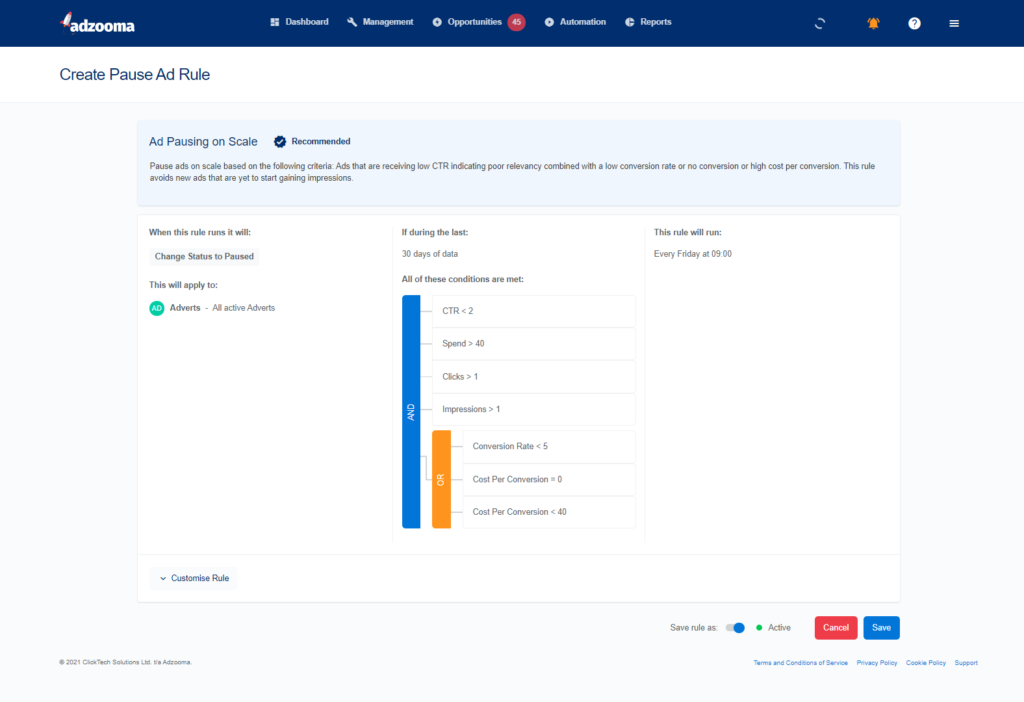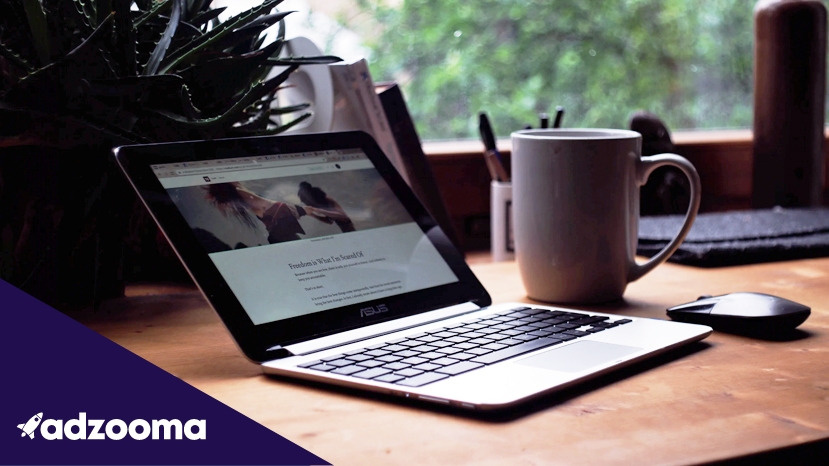Good PPC copywriting gets you clicks. By providing the best snippet of information to potential customers, you increase your chances of boosting sales, increasing brand awareness, and improving key web metrics.
There’s no absolute recipe for success when it comes to ad copywriting but I’ve come up with 14 tips to improve your PPC ads.
1. Know your target audience
Learn to take your target audience’s needs into consideration by really putting yourself in their shoes. Demographic data is important to help shape your ads. If you can figure out a bit more about what problems they go through daily, then you can explain how your product or service solves these problems.
Examples of demographic data include:
- Age
- Location
- Language
- Interests
- Income
It’s also vital to consider the PPC networks you use. We’ve written plenty of pieces on how it’s vital for business success to diversify your marketing channels and we’ve also dug into the data about what the likes of Google, Microsoft and Facebook are able to give you that other networks won’t. Here’s a couple of good ones for you to look over:
- How To Choose The Best Digital Marketing Channel
- In collaboration with the University of Cambridge, we analysed a sample of data to determine whether Microsoft, Google and/or Facebook ads is the best marketing channel for SMBs
- Microsoft Ads vs Google Ads: Measuring Conversions, Clicks & Cost
- We took a look at two identical campaign’s worth of data to see just how different the results across both the networks look.
2. Address users directly
Using the words “you” and “your” creates a friendlier relationship from the start and makes them feel like you’re speaking to them personally. This will make your audience feel more important and as if you were speaking to them personally. Attracting potential customers with a conversational tone can also help with the growing popularity of voice search.
3. Use PPC data to shape your copy
It’s really important to look at your PPC account and see what is converting well. But also, you need to cast the net wider and analyse external data.
Previously you had to perform a search query report or use external tools to find this kind of information, but these days with new technology like Adzooma, once you’ve connected your account to the platform, your ad copy is constantly analysed against the data to provide you with best practice Opportunities you can apply with just a few clicks. You can see an example just below.


Not signed up to Adzooma yet?
With a full automation suite, 24/7 account monitoring, one-click improvements, intelligent reporting, and so much more, Adzooma is the smarter and easier way to manage your ads.
Best of all? It’s completely free!
4. Use SEO data to shape your copy
Use SEO data to create a copywriting strategy that will meet your audience’s demands. Identify what information or advice they are currently seeking, and position your brand at every touchpoint along the way. Analyse search trends to discover what you need to include to make your PPC copywriting richer and more appealing. Here are some SEO tools you can use to help:
5. Emotional triggers
Using emotional triggers in your PPC copywriting is very effective. The most memorable ads are the ones that move or intrigue us. Appealing to both positive or negative emotions can work.
Simon Hall’s The Science of Emotions: What’s Behind PPC Ad Copy outlined the different emotions that could drive ad copy, including fear, trust, guilt, community, value, pleasure. Simon also suggested using persuasive language to elicit a response from users:
Your ad copy not only should elicit an emotional response from your audience, it should also encourage them to act on it. Once you’ve struck the right nerve and captured your audience’s attention, encouraging them to click is all about using persuasive language.
Simon Hall, The Science of Emotions: What’s Behind PPC Ad Copy
6. Maximise your space
Include as much information as possible in your allocated ad space. Create a custom URL using keywords, and ad extensions where possible. Fill any space leftover with detail and make the most of it.
Don’t forget your character limits. For Google Ads, they are:
| Field | Max length |
|---|---|
| Headline 1 | 30 characters |
| Headline 2 | 30 characters |
| Headline 3 | 30 characters |
| Description 1 | 90 characters |
| Description 2 | 90 characters |
| Path (2) | 15 characters each |
Read: Is Writer’s Block Real?
7. Showcase your USP
Use PPC copywriting to set yourself apart from the rest. What is your unique selling point (USP)? Throw in detail about special offers as well, or anything that will grab attention. Try to highlight what makes you different or better than the competition. Marketing Donut has a great guide on developing your USP including some of the following tips:
- List of all the needs that your product or service could meet and compare them to trends and competitors.
- Ask how these criteria compare to your business’s strengths.
- Carry out market research within your target audience.
- Confirm you can truly offer the USP with conviction.
- Build your marketing strategy around it.
- Monitor trends and new competitors that may offer similar features.
And if you’re stuck, spice up your PPC copywriting with some inspiringly creative ads.
8. Use powerful CTAs
Ensure your call to action (CTA) is strong and clear. A good tip is to use time constraints like “Buy now, offer ends Monday”. Encourage users to get in touch and make the text really stand out with clever design techniques. Use strong verbs and avoid cliches where possible. Your potential customers need to be explicitly aware of what’s going to happen when they click that button.
But, again, don’t forget character limits. You can work this out using Excel or Google Sheets and the LEN formula or you could use Adzooma which comes with a character limit checker as standard.
9. Test, test, test!
Run regular split tests on your PPC ads. Try out different CTAs in different locations, for example, see what works best. Highlight various benefits of your product or service and see which draws the most attention. The data you collate from testing will help you to improve your marketing strategy in the future.
Split testing isn’t reserved for Google or Microsoft Ads. Kass Botts’s article Facebook Split Testing 101 gave some tips on what to use for split testing and when not to split test:
Split testing is a way to use a dedicated budget for a specified time period to gather learnings about your marketing initiatives. They are best utilized when you have a specific, measurable question for which you need a data-driven answer. Best practice, especially for creative split testing, is to test conceptual differences rather than minor variations. For these smaller tweaks, your resources might be better used by running multiple ads in the same ad set and analyzing performance, or utilizing more than one ad set in a campaign.
Kass Botts, Facebook Split Testing 101
Adzooma’s Automation feature is also great sidekick for your testing endeavours too – we have a list of templates for this exact reason.
Once you’ve created the ad you want to test, head to Automations tab in your Adzooma account, click “New Automation Rule”, then “Choose Template”, and go to “Pause Ads With Low CTR”.
This automation rule runs every 30 minutes to check whether your ads are performing, and if they’re not up to the standard you expect, they’ll stop. You can also do the same by using the template “Ad Pausing on Scale” or “Pause Advert” if the CTR is fine but the conversion rate is low.
This gives you complete peace of mind and means you won’t waste any spend on those ads you’re looking to test.

10. Include numbers (but don’t stuff them in where they don’t fit)
Ask any PPC expert and they’ll tell you figures and statistics can help to increase click-through rate (CTR). If it makes sense to use a number, add one in. But don’t use numbers that don’t make sense.
Example: You wouldn’t need to say something is 100% guaranteed, because if it’s not totally guaranteed, you shouldn’t mention it at all.
11. Write keyword-rich display URLs
Including keywords about your product or service in your display URL is an easy way to let potential customers know what your business is. You can modify your display URL to make it different from your final URL. Relate lead generation strategies to your PPC copywriting and make the most of those keywords.
12. Handle objections
Brainstorm any initial objections potential customers might have to your ad, and address them. By bringing up any possible reasons to reject your business, you can foster a sense of trust and legitimacy, which leads to customer loyalty and longevity.
The advantage of handling objections in your ad copy, where applicable, is it answers questions straight away and gives a user clarification about your product, service, and overall brand.
13. Avoid too much repetition
Keep your PPC copywriting concise, relevant, and specific – don’t repeat yourself. It wastes time and valuable ad space. Try to think of new and interesting information to support your main selling point. You’ll be given an allowance for ad titles and text, display, and final URLs, so try and use it wisely. Use single words instead of descriptions where you can, and lone verbs instead of verb phrases. Although it’s best to maximise your character limits, less can be more if you find yourself running out of space.
So don’t repeat yourself.
14. Enhance your ad extensions
Make the most of your ad extensions. These are little bits of information strategically attached to your ad when it appears in search results. Ad extensions can include:
- Sitelink extensions
- Callout extensions
- Call extensions
- Location extensions
- Message extensions
- App extensions
- Price extensions
- Promotion extensions
And that doesn’t include automated ad extensions either. We have a longer piece on ad extensions for you to read over to get a full understanding if they’re new to you.
Plus, through the Opportunities feature in the free Adzooma platform, you will also get regular reminders to include ad extensions so you can keep your ads optimised at all times.


Conclusion
Remember how everything is connected. The goal of your PPC ad is to ultimately lead people to your site and generate conversions. It’s important to be consistent and maintain the same level of trust and customer engagement from the first click to the final destination.




